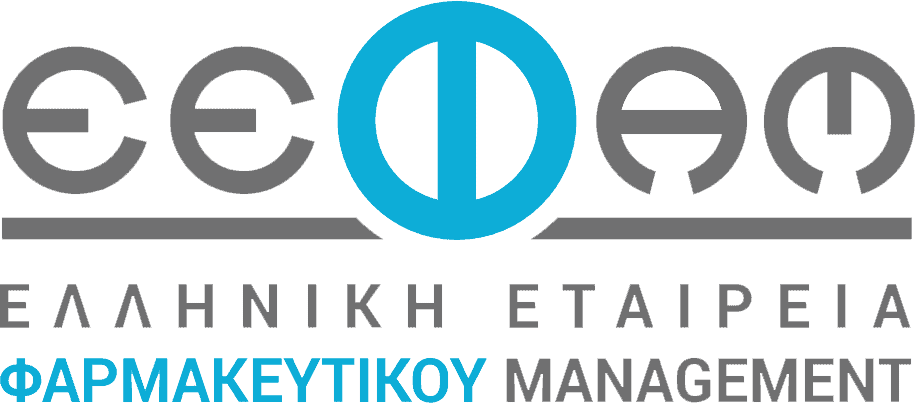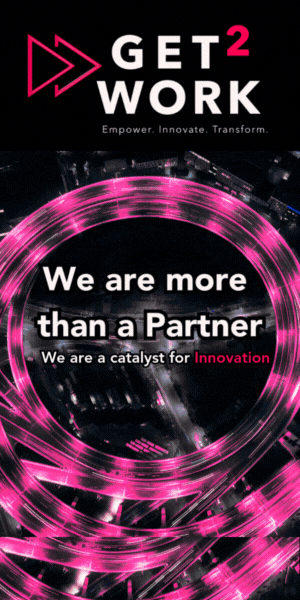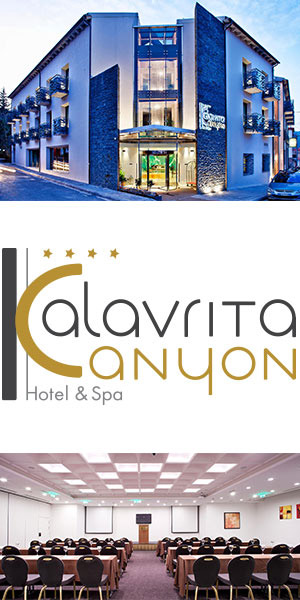Blog
Blog
Developing a resilient, adaptable workforce for an uncertain future

Unexpected crises, volatility, and a generally accelerated pace of change have increasingly become the norm. But it doesn’t feel normal. For many, it feels stressful and exhausting.
Think of all the very large disruptions on leaders’ agendas these days—widespread use of automation, artificial intelligence, and other technologies at work; geopolitical and global economic shifts; impacts from climate change; genomic editing and other scientific and bioengineering innovations; social justice trends; and evolving workforce demographics and employee expectations.
It’s unprecedented.
To successfully move their business strategies forward in this environment, 21st-century leaders need an engaged and innovative workforce that can change course quickly, effectively, and fluidly. Employees must be open to developing new capabilities, adopting new norms, and reconsidering long-held mindsets and behaviors. Leaders must be willing to do the same.
Achieving such resilience and adaptability at individual and organizational levels is easier said than done, however. Human beings have a natural affinity for order, predictability, and control. They will do everything they can to avoid chaos, uncertainty, and volatility. Research shows that when the path forward is unclear, and time and performance pressures are the same (or increasing), teams and individuals often default to what they already know—regardless of whether that approach is appropriate for the given situation.
In some cases, leaders will even advocate that employees and teams “just keep going” in the face of uncertainty—not making an important distinction between times when resilience is needed, times when adaptability is needed, and the interdependence of both. Consider an example from the world of sports: National Basketball Association player Stephen Curry is one of the greatest three-point shooters in the game. In a high-stakes playoff game, he misses an important three-point shot at the end of the first half. Despite that hiccup, he keeps shooting threes in the second half because he expects to deliver on a skill that he’s practiced and honed for decades. That’s resilience. But what if the NBA were to limit the number of three-point shots teams can take during playoff games? It may no longer pay for Curry to “just keep shooting”; he might need to think differently about his approach and adjust his game. That’s adaptability.
Leaders and organizations, just like world-class athletes, need to be both resilient and adaptable to realize growth, innovation, and organizational health. A recent study by the McKinsey Health Institute (MHI)1 shows that individuals who report high levels of resilience or adaptability demonstrate better holistic health and higher engagement than peers.2 But those who score high on both dimensions are over three times more likely than peers to report high engagement at work and almost four times more likely than peers to report an increase in innovative behaviors (Exhibit 1).3

To be resilient and adaptable, leaders and employees need a mix of skills. Resilience requires—among other things—the ability to view change as a challenge or an opportunity to bounce forward, regulate thoughts and emotions, take lessons from prior experiences, and execute on change. Adaptability requires, among other things, the ability to approach uncertainty with an open, learning mindset and to think flexibly and creatively about problems as they arise. When leaders and employees have both sets of skills, they can (like Steph Curry) better discern when a focus on resilience will be enough, when an adaptive response is required, and how to integrate the two into their strategies, operations, and decision making.
Our research and experience working with senior leaders in organizations across multiple industries and geographies point to four actions leaders can take to establish and support the presence of both resilience and adaptability in themselves and their workforces, thereby increasing the odds that they will successfully weather even the most extreme periods of volatility. Leaders should do the following:
- Set a compass or North Star to help people move in a common direction.
- Build a psychologically safe community, not just a workforce.
- Ensure that they, themselves, are demonstrating resilience and adaptability and serving as role models for others.
- Encourage employees to learn and build these skills in groups.
In this article, we’ll review recent McKinsey research on both resilience and adaptability and their association with employee outcomes. We’ll also consider the four actions cited above and how they can help leaders build resilience and adaptability at scale. These days, it’s imperative for organizations to find ways to turn disruption into competitive advantage. As author and psychotherapist Viktor Frankl noted in his book Man’s Search for Meaning, “When we are no longer able to change a situation, we are challenged to change ourselves.”
By the numbers: Resilience and adaptability matter for business performance
In a world where business disruptions arrive not as one-off surprises but in waves of unpredictability—and where change compounds change—business leaders need a more nuanced way to think about how they manage themselves and their organizations. Recent McKinsey and MHI research can help inform that thinking. It reveals how the presence (or absence) of resilience and adaptability can affect leaders, individuals, organizations, and overall business performance. Here are some of the findings.
Organizations underinvest in resilience and adaptability
Recent McKinsey research points to an unmet need in adaptability and resilience skills in organizations. According to McKinsey’s Talent Trends survey, for instance, only 16 percent of global employers currently invest in adaptability and continuous-learning programs. Yet according to that same research, 26 percent of 10,000 employees across the globe consider adaptability a top skill need for them; this was especially true for frontline and low-tenure workers (one year or less).4
As a result, most individuals feel unequipped to deal with uncertainty
MHI asked 30,000 global employees a series of questions aimed at assessing levels of resilience and adaptability.5 The resilience questions were about feeling confident and equipped to handle unexpected events. The adaptability questions were about feeling positive and even enjoying handling unexpected events or change. Only 23 percent of those surveyed, on average, responded favorably to questions about both resilience and adaptability—that is, being able to handle unexpected events and being positive about unpredictability. By contrast, 56 percent, on average, responded favorably to questions focused on resilience, and 28 percent, on average, responded positively to questions about adaptability.
Psychological safety is critical for building resilience and adaptability
Previous McKinsey research has shown how important psychological safety is for effective leadership and organizational performance. It allows for, among other things, the expression of bold ideas and divergent views in teams and can aid significantly in collaboration and innovation. Indeed, previous MHI research shows higher levels of engagement and innovative behavior in environments where employees experience psychological safety—more than two times higher compared with employees who do not experience psychologically safe conditions.6 In our more recent study on resilience and adaptability, the combination of, for example, resilience and psychological safety resulted in a 3.6 times increase in engagement levels and a 3.9 times increase in innovative behavior among those polled. And the combination of adaptability and psychological safety resulted in a 3.3 times increase in innovative behavior and a 2.9 times increase in engagement.
Strong organizational support also matters
MHI research shows that when employees experience strong organizational support (clear processes, ample resources, and supervisor or coworker support, for instance) along with psychological safety, resiliency, and adaptability, their likelihood of reporting high engagement or innovative behavior is six times higher than peers (Exhibit 2).7

Connecting the dots: Fostering resilience and adaptability at scale
What can leaders do to bring all these elements together and develop (and integrate) resilience and adaptability at scale? There are four actions they can take to reset organizational conditions, create some semblance of control, and give employees the skills and confidence to respond to disruption wherever and whenever it arises.
Set a compass or North Star for the organization
The more things change in an organization, the more individuals and teams look for signs of stability. Senior leaders can help foster resilience and adaptability at scale by pointing everyone toward a common North Star—for instance, some shared objectives and a few core principles or values (purpose, integrity, authenticity) that employees can cling to in the middle of a maelstrom. A leader may set a core value of “putting customers first in all we do.” That North Star can be a source of stability when a new entrant upends the market and teams need to quickly refresh a product design, learn new skills, or adopt new ways of working—whatever else is going on, it’s clear to everyone that there is still a need to put customers first.
Leaders should also devise clear mechanisms by which they can accurately measure the organization’s progress in achieving its North Star goals, and they should continually evaluate these metrics to ensure that they are aligned with strategic priorities. Leaders should freely share these data with teams and individuals across the organization; the information can be critical for steering individuals and teams away from their own siloed objectives and targets—some of which may no longer be appropriate in a dramatically changed environment.
Build a psychologically safe community, not just a workforce
When asked about what makes work great, most people will talk about their fellow employees. These are the people they spend hours and hours with building, selling, problem-solving, and doing the million other collaborative tasks that make up the average workday. To be resilient and adaptable at scale, leaders need to emphasize this sense of community and turn a bunch of isolated company residents into a functional, flexible, and friendly neighborhood.
There is no simple formula for success, but two key ingredients are psychological safety and an emphasis on accountability. Interestingly, many organizations focus on developing one at the expense of the other, when, in fact, they need very high levels of both. As described earlier, psychological safety enables more honest conversation, more candid feedback, more debate—and, ultimately, more trust and accountability, as teams feel more comfortable discussing the causes and consequences of errors or repeated underdelivery of results.
Safety challenges at one large travel company prompted leaders to revamp the culture (encourage people to focus as much on safety concerns as on business results) and establish more psychological safety (reward employees for spotting potential issues and for speaking up). Such moves allowed the company to better manage risk and source more innovative ideas from teams, and they improved employee retention and engagement scores. In this new environment, employees knew that when they spoke up, they would be believed and trusted.
Ensure that leaders themselves are resilient, adaptable, and can serve as role models
This article is about collective resilience and adaptability, but that can’t occur unless all leaders in an organization, from the C-suite to middle managers to the front line, hone their individual resilience and adaptability skills. These skills include situational and self-awareness, cognitive agility, learning agility, and emotional flexibility and regulation.8 CEOs must be honest with themselves, first, about their own experiences with disruption: How have they regulated their own emotions in times of crisis? How have they handled decision making when important information was missing, or when they didn’t have all the answers? As John Plant, the CEO of Howmet Aerospace, told the authors of The Journey of Leadership: How CEOs Learn to Lead from the Inside Out (Portfolio, September 2024), “So you get hired as CEO and you manage well the first phase of the cycle, which might require someone who has restructuring skills. But then, after three or four years, the company pivots to a growth mode, and because you don’t have the right skills, the board may fire you. Very few people have the experience or versatility to be able to operate in those different modes.” This is why it’s essential for leaders to take time to reflect, ask these questions, and revisit them often—not just to enable adaptability in others but to continue building this muscle themselves.
From their unique perspectives and experiences, CEOs can share their change stories, in town halls or team meetings or in one-on-one conversations, about how they have managed volatility in the past. They can engage members of the board in training on resilience and adaptability to fully embed the required skills, mindsets, and conditions in the organization. They can also integrate adaptability at scale into the overarching business strategy, on an equal footing with other elements of the strategic plan. And they can introduce aspects of resilience and adaptability into talent attraction and retention processes—hiring for these skills, developing training programs around them, and championing high-potentials who are “change able” or who demonstrate interest and capabilities in resilience and adaptability.
For middle managers and frontline workers, who are typically charged with translating strategy to execution and directly overseeing outcomes, adaptability and resilience are particularly essential skills. The ability of these managers to pivot and bounce forward, to build situational and self-awareness, to regulate emotions, and to otherwise demonstrate resilience and adaptability can have direct (and exponential) effects on individuals, teams, and organizations.
Encourage teams to build resilience and adaptability skills in groups
Research shows that social learning can accelerate individuals’ and teams’ intake of new information, recall of lessons learned, and motivation to behave differently.9 Social learning marries cognitive and emotional capabilities; individuals who learn as part of a group are not just recalling what they learned—they also remember how others reacted, what others said to facilitate their own knowledge, and so on. Leaders should encourage teams to similarly create a common learning experience and shared language about change, volatility, and uncertainty—themes that, as mentioned earlier, humans are hardwired to avoid. Strength in numbers can be an effective motivator.
One pharmaceutical company rolled out resilience and adaptability training in waves that eventually encompassed more than 9,000 employees at each level, signaling the importance of capabilities in these areas. In the first wave, the top team attended in-person, facilitated workshops, where lessons were reinforced through online modules, direct dialogues, and collaboration with others in the workshop. In the second wave, about 4,000 people leaders from across the company were given access to digital, self-paced tools, but those lessons were also reinforced through online modules and social learning. In the final wave, individual contributors from across the organization went through their own sessions, enhanced by the online app and social learning.
The commitment required for employees in all these training waves was only a few hours over three months (with regular, weekly touchpoints). Adaptability and well-being improved dramatically across the groups compared with a control group—and participants cited the social-learning aspect as an important part of the program. Leaders allowed time and physical space for individuals and teams to explore their curiosity, observe and imitate others, and practice critical concepts as a group. What’s more, the learning was aligned with the overarching business strategy and team objectives.
When electricity was invented and replaced steam machines in factories, it took 30 years before that innovation led to improved efficiency and productivity. Many companies simply couldn’t adapt quickly enough to new circumstances.
Today’s business leaders and organizations face a similar dynamic—this time confronting not one but a range of technical, economic, geopolitical, and social disruptions that demand learning and adaptation (beyond agile organizational structures). To avoid a fate like that of their historical factory-owner counterparts, leaders must acknowledge two critical factors associated with change—resilience and adaptability—and the codependent relationship between them. They must build workplace conditions that allow individuals and teams to become more resilient and adaptable, and they must integrate these skills with their business strategies. Leaders—and, frankly, the world—can’t afford to take another three decades to figure out how to integrate and adapt when the next big game changer in business emerges.
Πηγή: mckinsey.com








